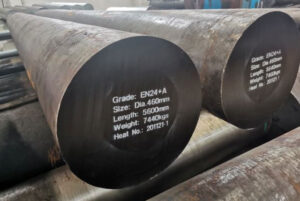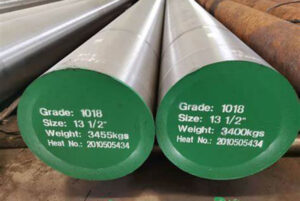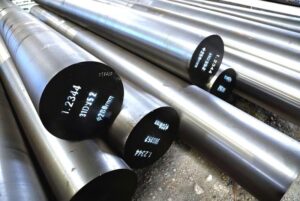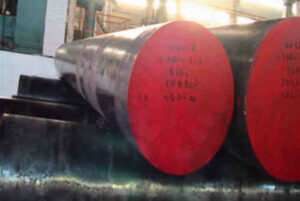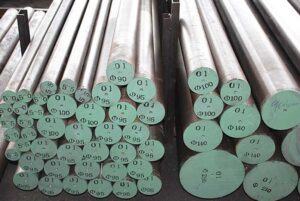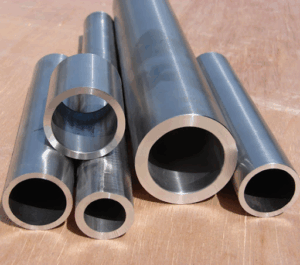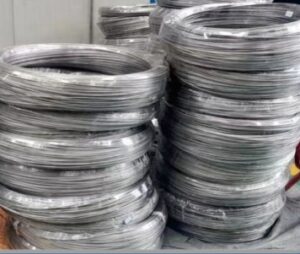Imagine a material that combines the strength to endure immense pressure, the toughness to resist shattering blows, and the workability to be shaped into complex forms. That’s the magic of 16MnCr5/1.7131 alloy steel, a special steel grade that’s become a mainstay in countless industries.
This article delves deep into the world of 16MnCr5/1.7131, exploring its composition, properties, applications, and everything in between. We’ll unpack its strengths and limitations, compare it to other metal options, and answer burning questions you might have. So, buckle up and get ready to discover the remarkable world of this versatile alloy steel.
Composition of 16MnCr5/1.7131 alloy steel
At the heart of 16MnCr5/1.7131 lies a carefully balanced blend of elements. Here’s a breakdown of the key players and their contributions:
- Carbon (C): The star of the show, carbon (between 0.14% and 0.19%) acts as the muscle, providing strength and hardness. Imagine it as the interwoven threads that give a fabric its resilience.
- Manganese (Mn): This dependable teammate (1% to 1.3%) enhances hardenability, meaning the steel can be strengthened through heat treatment. Think of it as a coach that pushes the material to reach its full potential.
- Chromium (Cr): A champion against corrosion (0.8% to 1.1%), chromium forms a protective layer on the steel’s surface, similar to a knight’s shining armor that deflects enemy attacks.
- Sulfur (S): While seemingly small (trace amounts), sulfur plays a crucial role in improving machinability. Imagine it as tiny ball bearings that make the steel easier to cut and shape during manufacturing.
- Iron (Fe): The foundation upon which everything rests, iron makes up the bulk of the composition. It’s the loyal foot soldier that forms the base structure of the steel.
This harmonious combination of elements imbues 16MnCr5/1.7131 with a unique set of properties, making it a valuable asset in various applications.
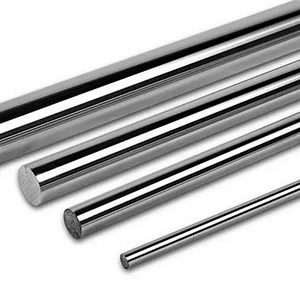
Properties of 16MnCr5/1.7131
16MnCr5/1.7131 boasts a well-rounded portfolio of properties that make it a compelling choice for engineers and designers:
Strength: Thanks to its carbon content, 16MnCr5/1.7131 offers impressive tensile strength (ranging from 640 MPa to 1375 MPa), allowing it to withstand significant pulling forces without breaking. Imagine it as a bridge that can support a heavy load without collapsing.
Toughness: The presence of manganese contributes to the steel’s toughness, its ability to absorb energy and resist fracturing under impact. Think of it as a boxer who can take a punch without going down.
Machinability: The trace amounts of sulfur make 16MnCr5/1.7131 relatively easy to machine compared to other high-strength steels. This translates to faster production times and lower manufacturing costs. Imagine it as clay that can be molded and shaped with relative ease.
Weldability: With proper techniques, 16MnCr5/1.7131 can be welded effectively, allowing for the creation of complex structures. Picture it as individual pieces seamlessly joining together to form a cohesive whole.
Case Hardening: This steel is particularly adept at undergoing case hardening, a process that creates a hard, wear-resistant surface while maintaining a tough core. Imagine it as a knight’s armor that’s tough underneath but has a hardened outer shell to deflect blows.
Dimensional Stability: 16MnCr5/1.7131 exhibits good dimensional stability, meaning it retains its shape well under varying temperatures and loads. This is crucial for applications where precise dimensions are essential.
Cost-Effectiveness: Compared to some other high-performance steels, 16MnCr5/1.7131 offers a good balance between performance and cost. It’s a budget-friendly option that delivers excellent value.
The combination of these properties makes 16MnCr5/1.7131 a versatile material that can be used in a wide range of demanding applications.
Applications of 16MnCr5/1.7131
16MnCr5/1.731 isn’t just another steel grade; it’s a workhorse material that finds applications in numerous industries due to its well-rounded properties. Here are some key areas where it shines:
- Automotive Industry: The automotive industry relies heavily on 16MnCr5/1.731 for various components that require a balance of strength, toughness, and machinability. Examples include:
- Gears: Gears in transmissions and differentials need to be strong enough to handle the immense torque generated by the engine. 16MnCr5/1.731’s strength and wear resistance make it ideal for these applications.
- Crankshafts: The crankshaft, the heart of the engine, translates reciprocating motion into rotary motion. 16MnCr5/1.731’s ability to withstand high loads and fatigue makes it a suitable choice for crankshafts, especially in non-high-performance engines.
- Suspension Components: Suspension components like control arms and tie rods need to be tough and resilient to handle road impacts and maintain vehicle stability. 16MnCr5/1.731 offers a good balance of these properties.
- Construction Equipment: The world of construction relies on robust materials to handle heavy lifting and harsh environments. 16MnCr5/1.731 plays a role in various construction equipment components, such as:
- Bucket Teeth: Excavator bucket teeth need to be incredibly wear-resistant to penetrate tough materials like soil and rock. 16MnCr5/1.731 can be case-hardened to create a wear-resistant surface while maintaining a tough core.
- Booms and Arms: The booms and arms of construction equipment experience significant bending and lifting forces. 16MnCr5/1.731’s strength and dimensional stability make it suitable for these applications.
- Frames and Chassis: The frames and chassis of construction equipment need to be strong and rigid to support the weight of the machine and resist deformation. 16MnCr5/1.731 offers a cost-effective option for these components.
- Oil and Gas Industry: The oil and gas industry operates in demanding environments with high pressures and potential for corrosion. 16MnCr5/1.731 can be used for various components in this industry, such as:
- Drill Pipes: Drill pipes used for oil and gas exploration need to be strong and resistant to fatigue under high pressure. 16MnCr5/1.731 offers a balance of these properties.
- Valves and Fittings: Valves and fittings in pipelines need to be strong and leak-proof to ensure safe and efficient operation. 16MnCr5/1.731’s strength and weldability make it suitable for these applications.
- Pump Components: Pumps used in the oil and gas industry experience significant wear and tear. 16MnCr5/1.731 can be case-hardened to create wear-resistant components within pumps.
These are just a few examples of the many applications where 16MnCr5/1.731 proves its worth. Its versatility and ability to be tailored through heat treatment make it a valuable asset for engineers across various industries.
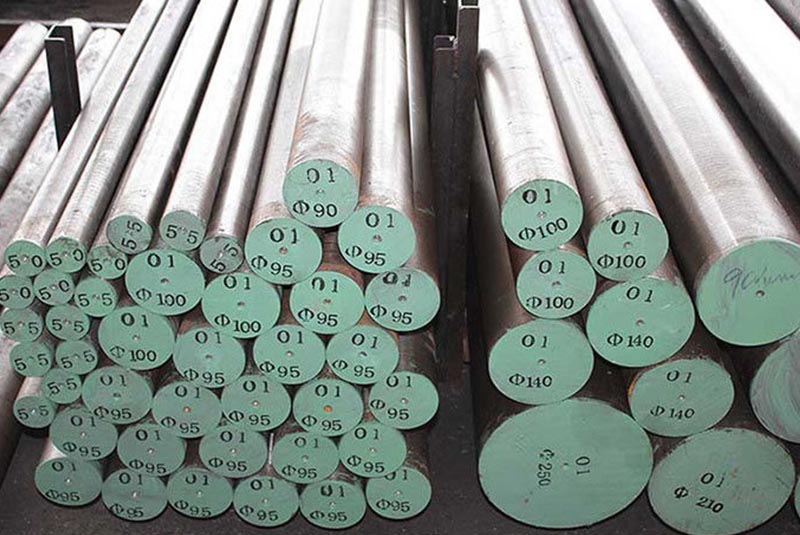
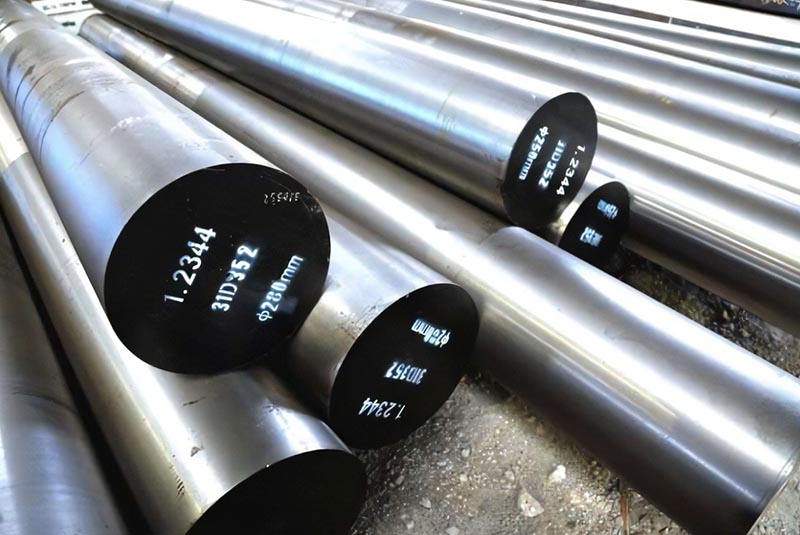
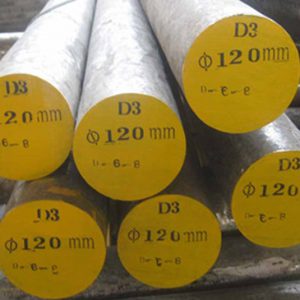
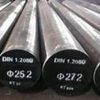
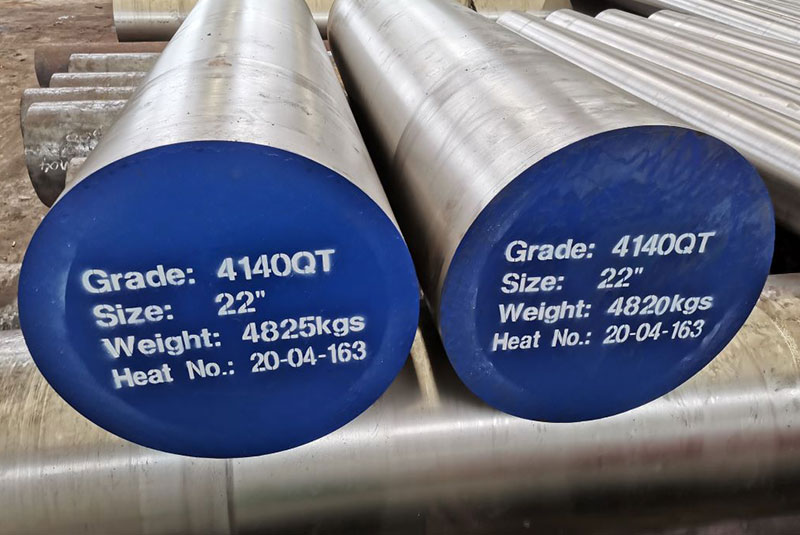
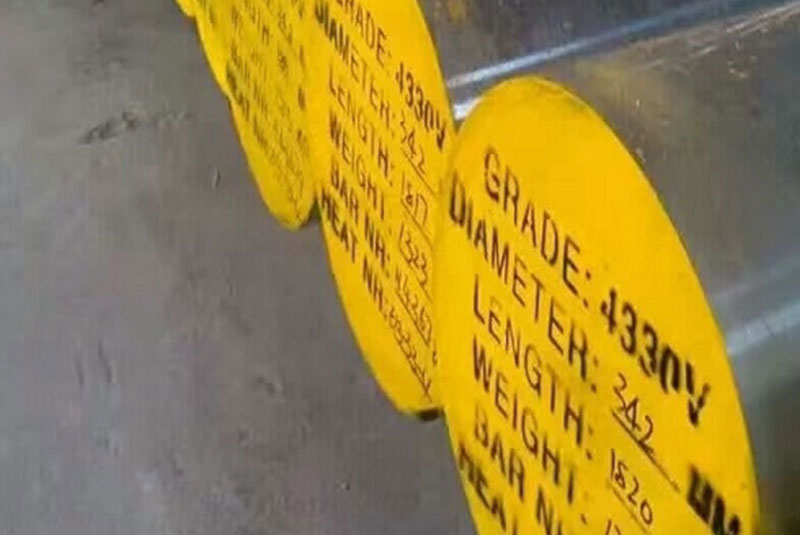
Specifying the Right Fit: Grades, Standards, and Sizes
Choosing the right grade and size of 16MnCr5/1.731 depends on the specific application and desired properties. Here’s a breakdown of some key considerations:
Grades: Several international standards define 16MnCr5/1.731 with slight variations in composition and properties. Here are some common examples:
- EN 1.7131: This European standard defines the basic composition of 16MnCr5/1.731.
- SAE 5115: This American standard is an equivalent grade to EN 1.7131.
- JIS SCM435: This Japanese standard is another equivalent grade to EN 1.7131.
Standards: Several standards govern the production and properties of 16MnCr5/1.731. Some relevant standards include:
- EN 10084: This standard specifies the technical delivery conditions for case-hardening steels like 16MnCr5/1.731.
- Sizes: 16MnCr5/1.731 is available in various shapes and sizes to cater to different application needs. Here are some common forms:
- Rounds: Rounds are widely used for shafts, axles, and other cylindrical components. They come in diameters ranging from a few millimeters to several centimeters.
- Flats: Flats come in various forms like plates, sheets, and strips. Plates are thicker and used for structural applications. Sheets are thinner and used for fabrication and cladding. Strips are long, narrow forms used for springs and cutting tools.
- Bars: Bars are typically square or rectangular in cross-section and used for various applications requiring a specific shape.
- Forgings: Forgings are formed by hammering or pressing the steel into a desired shape. They offer superior strength and are used for critical components.
Metal Powders for Additive Manufacturing: With the rise of additive manufacturing techniques like Laser Powder Bed Fusion (LPBF), 16MnCr5/1.731 is also becoming available in metal powder form. Here are some specific metal powder models to consider:
- Höganäs AM160C: This gas-atomized powder offers good flowability and weldability, making it suitable for LPBF processes.
- Carpenter Additive CP-16MnCr5: This nitrogen-atomized powder boasts high purity and excellent mechanical properties after LPBF processing.
- SLM Solutions SX 16-5: This pre-alloyed powder is specifically designed for LPBF and delivers good mechanical properties and dimensional stability.
- EOS M 290: This gas-atomized powder offers a balance of strength, toughness, and machinability after LPBF processing.
- AMPA AMCr5: This atomized powder is known for its good printability and suitability for a wide range of LPBF applications.
It’s crucial to consult with the material supplier and a qualified engineer to determine the optimal grade, size, and metal powder model for your specific project requirements.
Advantages and Limitations of 16MnCr5/1.731
While 16MnCr5/1.731 offers a compelling set of properties, it’s essential to understand its limitations to make informed decisions. Here’s a balanced view of its pros and cons:
Advantages:
- Excellent Strength and Toughness: 16MnCr5/1.731 delivers a good balance of strength and toughness, making it suitable for applications that experience high loads and impact.
- Good Machinability: Compared to other high-strength steels, 16MnCr5/1.731 is relatively easy to machine, reducing production costs and lead times.
- Weldability: With proper techniques, 16MnCr5/1.731 can be welded effectively, enabling the creation of complex structures.
- Case Hardening: This steel excels at case hardening, allowing for a wear-resistant surface and a tough core, ideal for components experiencing wear and tear.
- Dimensional Stability: 16MnCr5/1.731 maintains its shape well under varying temperatures and loads, crucial for applications requiring precise dimensions.
- Cost-Effective: Compared to some high-performance steels, 16MnCr5/1.731 offers a good balance between performance and cost.
Limitations:
- Moderate Corrosion Resistance: While chromium offers some protection, 16MnCr5/1.731 isn’t ideal for applications exposed to harsh corrosive environments.
- Not for High-Temperature Applications: The strength of 16MnCr5/1.731 can diminish at elevated temperatures, limiting its use in high-heat environments.
- Brittle at Very Low Temperatures: At extremely low temperatures, 16MnCr5/1.731 can become brittle and susceptible to cracking.
By understanding both the advantages and limitations of 16MnCr5/1.731, you can make informed decisions about its suitability for your specific application.
When to Choose 16MnCr5/1.731:
16MnCr5/1.731 is an excellent choice for applications that require:
- A balance of strength, toughness, and machinability.
- The ability to be case-hardened for wear resistance.
- Dimensional stability under moderate temperatures and loads.
- Cost-effectiveness compared to some high-performance steels.
When to Consider Alternative Materials:
If your application demands:
- Superior corrosion resistance, consider stainless Sourcing high-quality 16MnCr5/1.731 is crucial for ensuring the success of your project. Here’s a glimpse into the world of suppliers and how to find reliable partners:
Phạm vi toàn cầu: 16MnCr5/1.731 is a widely produced steel grade, with suppliers located across the globe. Major steel mills in Europe, Asia, and North America offer this material in various forms.
Reputation Matters: When choosing a supplier, prioritize established companies with a proven track record of quality and reliability. Look for certifications like ISO 9001, which indicate the supplier’s commitment to quality management.
Material Expertise: Choose a supplier with in-house expertise in 16MnCr5/1.731. They should be able to provide guidance on selecting the right grade, size, and heat treatment options for your specific needs.
Value Beyond Material: Look for a supplier who offers value-added services beyond just supplying the steel. This could include cutting, machining, heat treatment, and other services that can streamline your production process.
Competitive Pricing: While cost shouldn’t be the sole deciding factor, it’s essential to get competitive quotes from multiple suppliers. However, remember that the cheapest option might not always translate to the best value in terms of quality and service.
Online Resources: Several online platforms connect buyers with steel suppliers. Utilize these resources to compare prices, product offerings, and supplier reputations. Industry associations and publications can also provide valuable insights into reputable steel suppliers.
Building Partnerships: A strong relationship with your steel supplier is essential for long-term success. Look for a supplier who is responsive, communicative, and willing to go the extra mile to meet your needs.
By following these tips, you can identify reliable suppliers of 16MnCr5/1.731 and ensure you’re getting the high-quality material you need for your project.
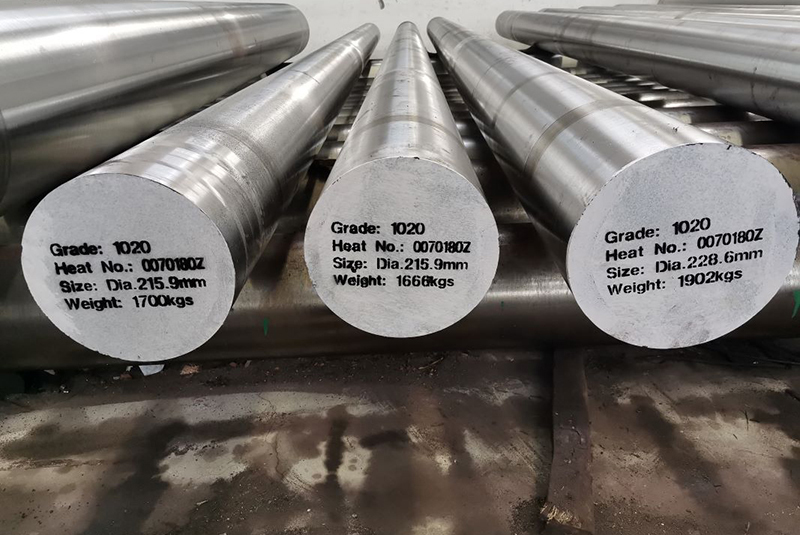
Câu hỏi thường gặp
Here are some frequently asked questions regarding 16MnCr5/1.731 to shed light on any lingering doubts:
Q: How does 16MnCr5/1.731 compare to other common steels like AISI 1045?
A: AISI 1045 is a medium-carbon steel with good machinability but lower overall strength and toughness compared to 16MnCr5/1.731. 16MnCr5/1.731 offers a better balance of strength, toughness, and machinability, making it a more versatile choice for demanding applications.
Q: Can 16MnCr5/1.731 be used for outdoor applications?
A: While 16MnCr5/1.731 offers some corrosion resistance due to chromium, it’s not ideal for harsh outdoor environments with constant exposure to moisture and salt. Consider stainless steel grades or galvanized steel for superior corrosion resistance in outdoor applications.
Q: What are the typical heat treatment options for 16MnCr5/1.731?
A: Common heat treatments for 16MnCr5/1.731 include normalizing, quenching and tempering, and carburizing followed by quenching and tempering. The specific heat treatment chosen depends on the desired balance of strength, toughness, and wear resistance for the application.
Q: Is 16MnCr5/1.731 suitable for welding?
A: Yes, 16MnCr5/1.731 can be welded effectively using appropriate techniques like preheating and post-weld heat treatment. Consulting with a qualified welder is recommended to ensure proper weld procedures are followed.
Q: What are the future prospects for 16MnCr5/1.731?
A: With its well-rounded properties and cost-effectiveness, 16MnCr5/1.731 is expected to remain a popular choice in various industries. The development of new processing techniques and the growing adoption of additive manufacturing with metal powders of 16MnCr5/1.731 could further expand its application potential.

